Fishing Report: August 27, 2021
Mahi mahi are appearing near shore
Mahi mahi are showing up by surprise on many near shore trips right now. This is the time of the year you want to have a spinning rod and reel on standby rigged and ready for those passing mahi mahi schools, says Captain Dylan Hubbard of Hubbard's Marina.
MADEIRA BEACH, Fla. - Every Friday morning, Captain Dylan Hubbard of Hubbard's Marina joins Good Day to fill viewers in on his fishing forecast as we head into the weekend.
Here is his fishing report for August 20, 2021.
Inshore
Red tide situation seems to be even more so improved overall in the area. John’s Pass continues to be the most affected area it seems, but outside of that, everything has low background levels forecasted for the coming week.
Tampa Bay overall looks nearly completely clear while most of the low background level readings are mostly along the coastline and intercostal waterways. Keep an eye on the forecasts and reports via this link if you are interested.
Mangrove snapper fishing inshore is going off right now with a seemingly endless snapper action even spilling onto many local flats too. The structures of the area are holding plentiful mangrove snapper on rocks, bridges, piers, jetties, rock piles and more but they will follow the bait to the flats and other areas too.
Some reporting catching limits of mangrove snapper while targeting snook and redfish using whitebait on the flats. In the passes around the deeper bridges, we are seeing some big mangroves from time to time. Also, the rock piles of Tampa Bay around the Skyway, Gandy and the shipping channel are producing respectable sized mangrove snapper as well.
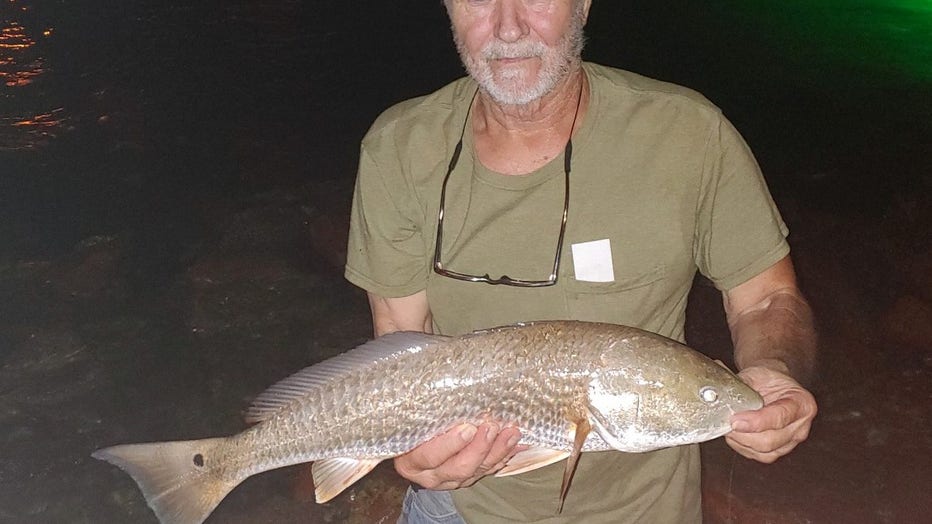
Redfish caught inshore (Credit: Hubbard's Marina)
Look for them around these areas when the tides slow up a bit. They still want moving waters to feed, but once it starts to crank, they tend to take shelter and it makes it too difficult to feel the bite anyways.
Snook action is steady around the area with some good action around the flats and beaches. Big breeders are hanging a little deeper, trying to stay cool and are less aggressive and pickier compared to the more prevalent smaller and more aggressive male snook that seem to be everywhere.
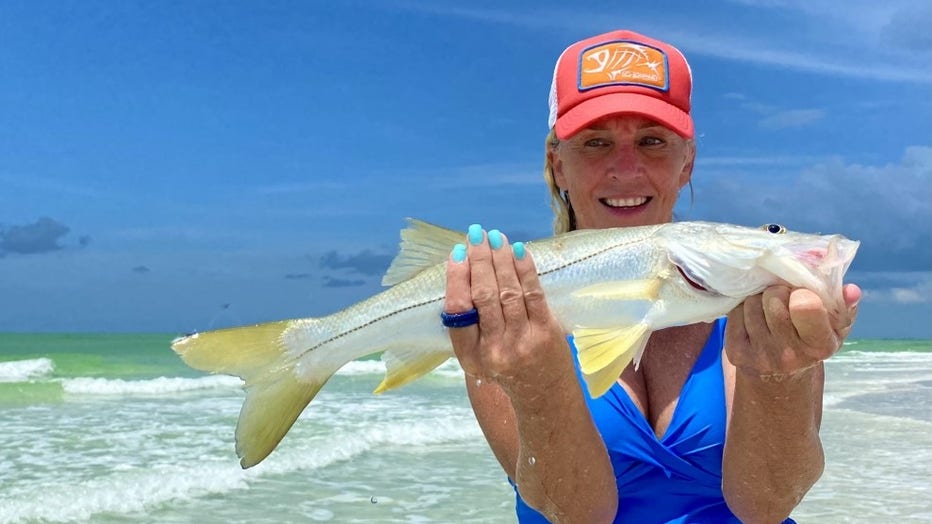
Snook caught inshore (Credit: Hubbard's Marina)
Bigger fish are more opportunistic and smarter. The cut bait, slow-moving soft plastics and big live baits are best -- with the cut bait being king. The nighttime and extremely early morning are best to getting cooperation from the bigger snook, or the deeper pockets or drop-offs during the day.
Nighttime dock light or bridge fishing is a great option for the snook this time of the year. Remember, you have to think like a fish and put yourself in their shoes they are looking for cooler moving water, shade or that nighttime reprieve from the heat. They will also only eat if your bait is presented naturally and moving with the current, they are staged up watching for passing baits.
See my poorly made graphic for the demonstration of what it means to present your bait naturally with the current.
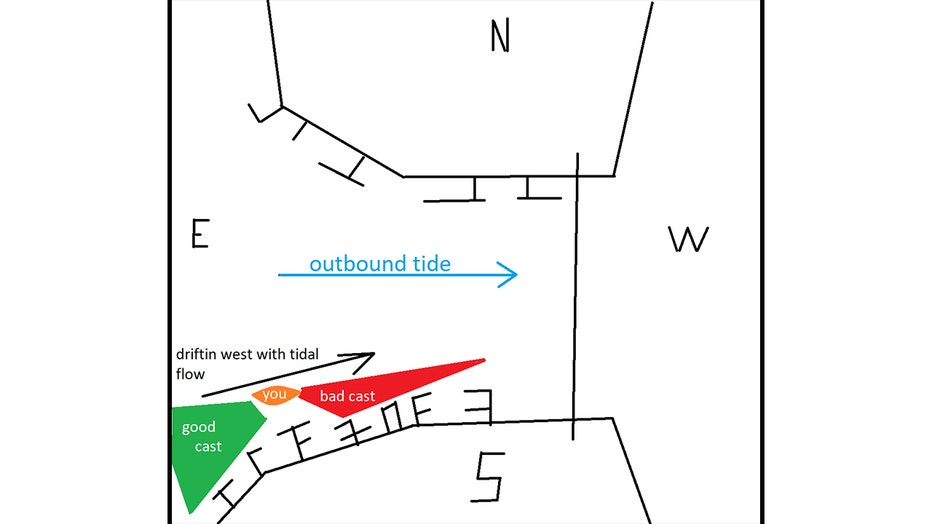
Made by Captain Dylan Hubbard
Snook and most any fish are too smart to hit your bait that is being worked against a current. While, if you’re presenting it naturally along the current, ensuring it is getting inside the strike zone where the fish are staged, that’s when they will bite your lure, live bait, or cut bait and you will have the opportunity to land the fish.
Redfish much like snook are very prevalent and actively feeding right now. We are seeing some big schools of fish moving along the flats, mangroves, dock lines and even around the passes and occasionally along the beaches. Look for them at the mangroves, oyster bars and shallow areas at higher tides. During lower tides the dock lines, pockets, passes, deeper drop offs are good areas to look for hungry redfish. Along the bottom at dock lights or bridge lights, we’re finding actively feeding redfish too.
Trout action is going well around the area. These guys are one that you can find ready-to-feed even during the heat of the day when the snook or redfish are more lethargic.
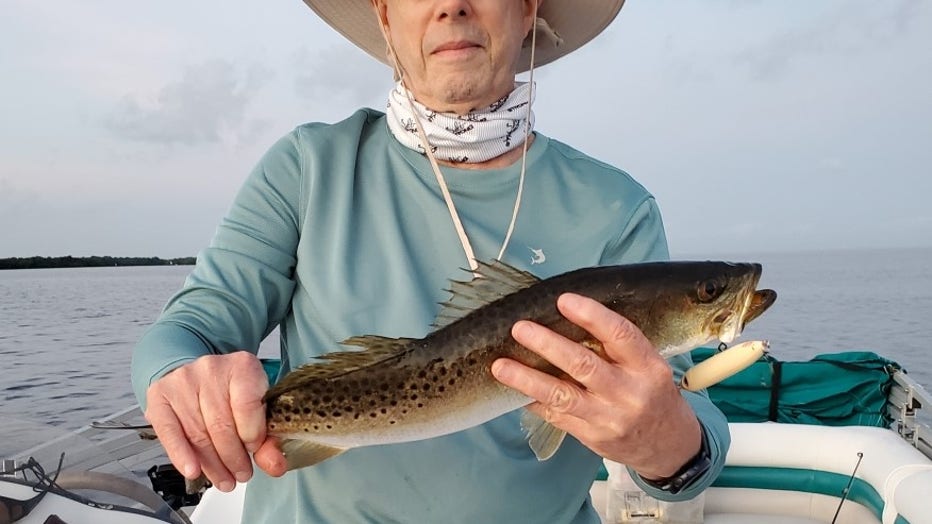
Trout caught inshore (Credit: Hubbard's Marina)
They are hanging on deeper flats in the 6-8 foot range or off the edges of shallower flats in the potholes and cuts. We’re finding them around the bridges and docks hiding in the shade too. At night, trout are loading up around bridge lights, dock lights and areas holding bait where water is flowing.
Mackerel are thick right now at the mouth of Tampa Bay and we’re finding them along the beaches too at those areas of live bait along the beaches. Local fishing piers, bridges and passes are also holding actively feeding mackerel. Look for the bird action that will easily help you find the bait that the mackerel are actively feeding on. You can even find them at the edges of the deeper grass flats at the mouth of the bay and local deeper water passes.
Tarpon action is still going well with some smaller juvenile fish around the local bays, docks, and bridges and in the back bay too. Larger fish are around the passes and big bridges of the bay, especially at night. During the day, look for them around the mouth of the bay, local passes and moving along the beaches.
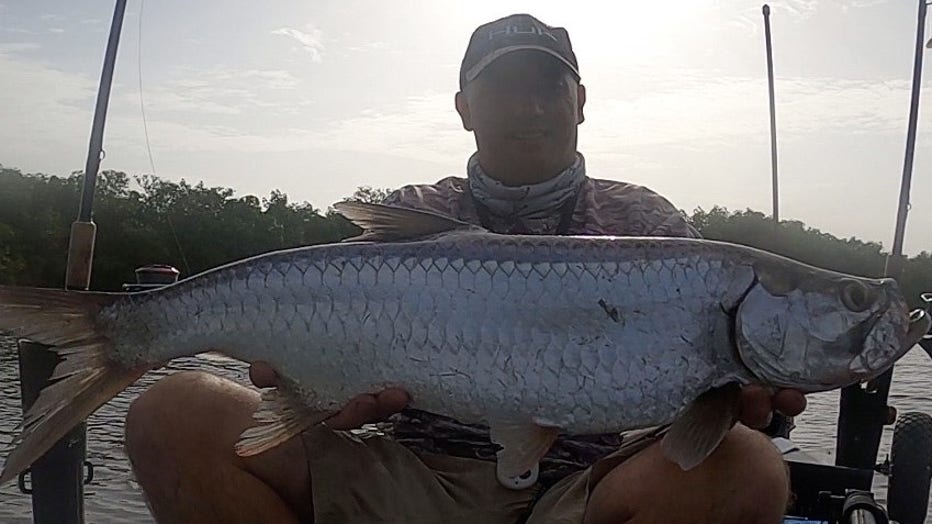
Tarpon caught inshore (Credit: Hubbard's Marina)
Tripletail action has been good lately around the markers and buoys and floating debris around Tampa Bay. They love those live shrimp and artificial shrimp presented on lighter tackle around these little hideouts, scattered around the surface of the bay area.
If you are passing any debris, markers or buoys, keep your eyes peeled. If you spot one don’t try to slow down too fast past the area and turn around slowly after you’ve slowed down to creep back to him. Even better, let the wind and current bring your boat back in a stealthy fashion because once spooked, they will likely disappear or not feed, but if you can get a shrimp there prior to spooking them, normally it will be an instant bite situation.
Cobia are around right now in the area. You will often see them cruising around the pods of dolphins or big groups of rays. You will find them occasionally around the markers and flats too. Keep your eyes peeled and a pitch rod ready for the occasional cobia cruising the area.
Near shore
Red grouper are the big news near shore right now. There’s a good red grouper bite going well closer to the deepest near shore waters.
We are seeing them most often closer to that 100 feet mark, but have caught some nice keepers even on our half-day fishing trip as shallow as 50 feet of water this past week. They love the bigger strips of squid, octopus tentacles, live pinfish, or cut threadfin or sardines. Look for them around the flat areas of hardbottom holding bait, potholes or smaller ledges or cracks.
Hogfish action is still sporadic and not like the cooler months, but we are seeing some nice ones from time to time in that 40-80 feet range on the live shrimp and lighter tackle. Look for them on the smaller ledges or areas of hardbottom with the fuzzy appearance on the machine.
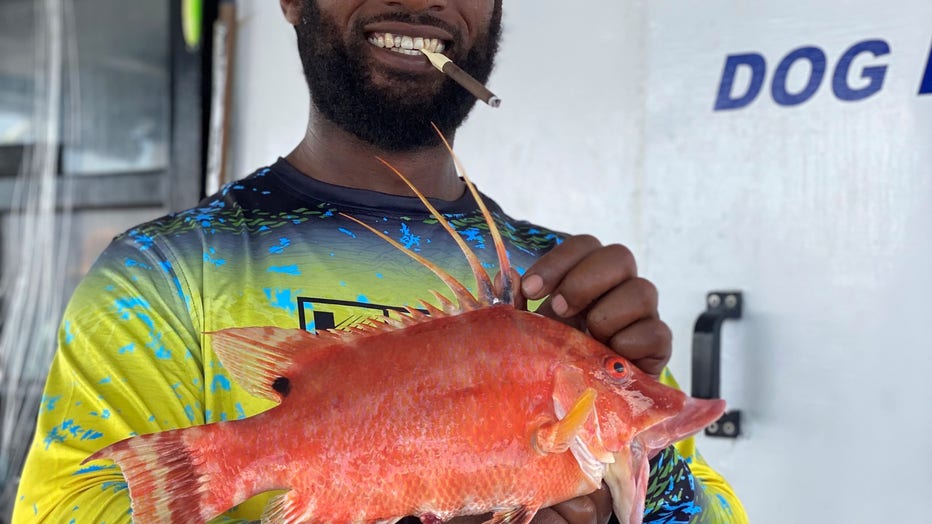
Hogfish caught near shore (Credit: Hubbard's Marina)
You don’t want big bait shows where lots of hungry fish are. You look for that solid hard bottom that will have lots of live coral, sea fans and hold those smaller fish and crustaceans where the hogfish will be spread out searching for their next meal.
Mangrove snapper action is sporadic but once you find a few you can often find more around that same area. They love those bigger ledges, potholes or structures as they are very structure-orientated fish that love to eat on shrimp, cut threadfins or sardines. We will often get our mangrove snapper while targeting hogfish on those smaller ledges or around them as the mangroves will leave their rocky homes to find bait around them over that hardbottom area.
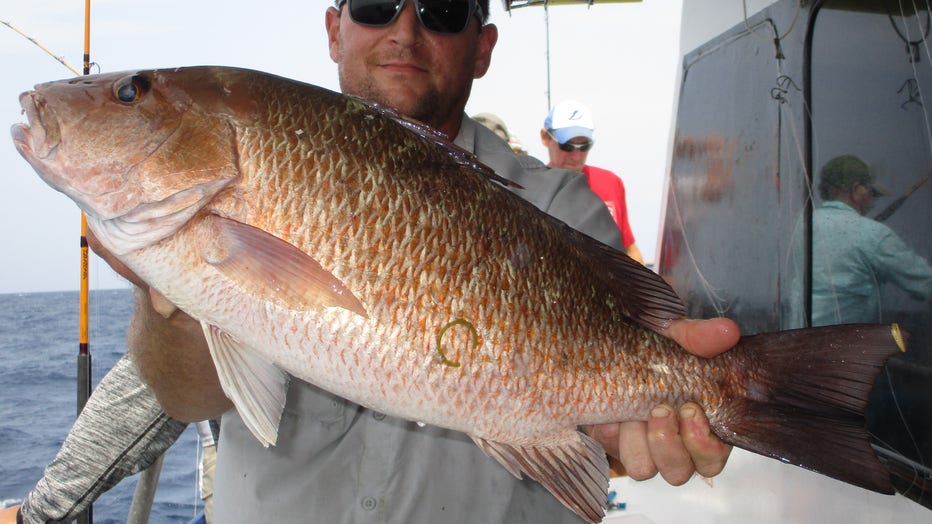
Mangrove snapper caught offshore (Credit: Hubbard's Marina)
Lane snapper are super prevalent around the area in depths of around 60-100 feet of water. We are seeing them on the squid, shrimp and even cut pieces of the threadfin and lighter tackle. They make great table fair and are extremely mild good tasting fish that seem to only get more and more prolific and larger year to year.
Mahi mahi are showing up by surprise on many near shore trips right now. This is the time of the year you want to have a spinning rod and reel on standby rigged and ready for those passing mahi mahi schools of what we call ‘chicken dolphin’ which are the 14– to 24-inch smaller dolphin that typically hang in large numbers.
Offshore
Deepwater seems to be the key if you want a chance at wrestling up some big jacks. What was interesting though was during the mid-week trip, we had a guy dropping an underwater camera and nearly all the footage showed keeper sized jacks around. Even as shallow as 120-140 feet of water they seemed less likely to feed while deeper beyond 140 feet up to around 280 feet we saw more actively feeding and overall large amberjack. One from the 44-hour this past weekend tipped the scales at a whopping 97 pounds!
Gag grouper action was a bit soft again this past week for us offshore. We did get some big boys out there when fishing extremely deep to almost 300 feet of water. However, we weren’t seeing big numbers in the double digits like we did in June when the water was a bit cooler.
Now that it’s warmed up so much, we’re seeing many of the truly big fish in that 30 pound-plus range pushing deeper or out of the area to the north. It doesn’t mean you won’t catch a few nice gags, it just means the big concentrations of aggressive gags are less likely when the water is so hot. Once it cools off come mid- to late-October, the gag bite should start to get ‘hot’ once again.
Red grouper action is going well out there in deep water, but you’re still wading through a lot of the undersized red grouper to get to the keeper fish. Make sure to get them up quick, get them dehooked using a nice dehooking tool and then vent or descend them quickly so they can live to fight another day and get big enough to keep if you’re seeing those undersized red grouper out deep. This time of year, once around 80-90 feet of water, you will have to vent your fish when the water and air are so hot.
Mahi mahi, wahoo, and occasional kingfish are the most common offshore pelagics this time of year. Have those flat lines and pitch rods ready if you’re heading offshore this time of year.
DON’T BE A FOOL, bring a venting tool & Descending device
Keep in mind the importance of dead discards and discard mortality when engaged in near shore or offshore fishing. How many do you know right now that are all for catching and releasing snook, redfish, and trout but will be the first in line to kill a mangrove snapper, gag grouper, or red snapper? But the attitude completely changes when discussing these offshore species?
Plus, the same person inshore that will hold their breath and wet their hands before handling a breeder snook will go offshore and then cull through 20 red snapper before keeping their two red snapper they deem large enough to fill their two-fish bag limits. Meanwhile, the other 18 they released will often end up suffering fatal damage if not properly descended or vented?
Please help us to spread the word on the importance of descending or venting your released fish. Descending devices are most easy to use and quick to pick up on their use. They are most effective for most anglers.
However, an expert and precise angler with proper training and tons of experience can use a venting tool properly with similar outcomes. A venting tool requires you to pierce the fish while most descending devices are much less invasive. While using a venting tool, it is imperative you pierce them in the exact right spot, and you do not go but a quarter-inch or less in the fish. Most venting tools require you to ‘choke up’ on the tool to prevent over-penetration into major organs.
When fishing deep water, especially in the hot summer months, please make sure to treat all fish intended to be released like that breeder snook inshore and minimize the time it takes you to get him from the bottom to the boat using heavier proper tackle, not an ultra-light spinning reel.
Then once onboard, minimize the time out of the water. Then use a proper de-hooking tool and then, for the love of God, use a descending device or venting tool PROPERLY to ensure that fish has a chance to live another day.
Three things will help ensure the survivability of those fish released offshore:
- Making sure they are brought up quickly and do not expend all their energy in the fight.
- Make sure they are unhooked smoothly, easily, and as quickly as possible.
- Finally, make sure they spend the least amount of time at the surface at negative pressures where barotrauma exponentially increases its effect with each passing second.
Also, keep in mind when the water is warm, there is less dissolved oxygen content and the chances of barotrauma increase even more while its effects can be even more deadly.
LINK: Here’s all the information and more on barotrauma and how to mitigate that fatal damage to your future offshore catch
**Note: I recommend the Salt Strong articles at the bottom of the page under ‘webpages.’ I helped them develop those personally.
STATE SURVEY to improve recreational data and access
It is imperative that you have your Gulf Reef Fish survey endorsement on your fishing license.
You should get one if you are a private recreational angler or diver fishing from a private boat anywhere in Florida who intends to harvest, attempt to harvest or possess one or more of the following reef fish species: mutton snapper, yellowtail snapper, hogfish, red snapper, vermilion snapper, gag grouper, red grouper, black grouper, greater amberjack, lesser amberjack, banded rudderfish, almaco jack, gray triggerfish, Gag grouper, Red grouper, Scamp grouper, Mangrove snapper, Lane snapper, Kingfish, Tuna, or Mahi mahi.
Here is all the information and more on that program and how you can sign up.
TERMS OF REFERENCE:
INSHORE – from the back bays out to the bridges and including right on the beaches
NEAR SHORE – From the beaches out to 20 miles, or up to 100ft of water
OFFSHORE – from 20 miles or 100ft and beyond
For more fishing reports, photos, videos and more check out Hubbard’s Marina on Facebook, Instagram, YouTube, or Snapchat. Just simply search "HubbardsMarina" and do not forget our family motto, "If you’re too busy to go fishing, you’re just too busy!

